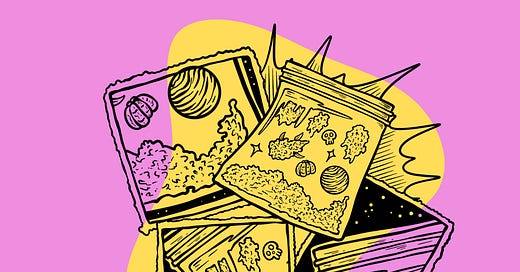Shades of Pink: The Rise of Colombian Tusi (Pink Cocaine)
Bags of pink powder have been creeping around the globe for a few years now. What’s in them?
“No fentanyl,” the tusi dealer I’m messaging on Telegram assures me. I’m trying to find out exactly what’s in the bowl filled with pink powder in the chat.
Still trying to gauge my needs they quickly add, “But we can do a recipe with fentanyl. We have both recipes.”
I never actually sent the Bitcoin required to secure what I’m assured is authentic product from Medellin, Colombia — the birthplace of tusi. Nor does the dealer clarify what exactly tusi is, beyond optional fentanyl customization. They also are clear it isn’t 2-CB, despite what the phonetics of the name suggest.
“We have been seeing a few more cases of tusi being brought in intentionally for testing over the last three months,” Angus Quinton of Check Your Drugs in Vancouver, Canada told Tripsitter, adding that they’re ”still encountering a few cases each month of people mistakenly purchasing tusi when they intended to purchase the psychedelic with the similar name, 2C-B.”
“The most common ingredients in this polysubstance mixture are ketamine, MDMA, cocaine, and caffeine and any given sample could contain any, all, or none of these. Samples are also generally dyed pink but there have been purple and blue samples submitted in the past,” explains Quinton.
Online markets and communities have been selling and discussing tuci, tussy, tussi, pink cocaine (cocaina rosada), and tucibi for the better part of a decade. The slang term tusi seems to have developed from sounding like "2C," an abbreviated version of 2-CB, one of Alexander Shulgin's more popular creations. (More on that evolution below.)
But make no mistake, harm reduction organizations and law enforcement have run tests showing tusi is basically never 2C-B.
Instead, tests show the drug is a highly variable mix of substances, what one Redditor called "drug salad."
"My dealer was telling me that he uses the ‘leftovers’ (old pills, remains of coke, etc) to prepare tusi’ and he sells it like the most expensive drug," explains a Reddit user from Argentina.
"I'm in Latin America and 'Tuci is the product everybody wants. It is NOT 2CB and everyone knows that" says another Redditor. When they asked their dealer if there was a recipe they responded, "No, you mix whatever you have, but I usually mix a base of MDMA, some K, some coke or caffeine, add some drops of LSD, maybe Xanax, AND cherry jelly powder for the color and flavor."
A documentary team from VICE traveled to Medellin to interview the alleged tusi traffickers, finding a similar story — producers mix up whatever powers they had lying around, like MDMA, ketamine, cocaine, and sometimes fentanyl.
Where Does Tusi Come From?
The story begins when 2-CB apparently arrives in Medellin in the early 2000s, with small amounts smuggled in by wealthy Colombians returning home after studying in Europe, according to an investigation by Insight Crime.
El Colombiano, a Colombian newspaper, notes as early as 2007 hospital admission involving some kind of psychedelic substance suggests 2-CB.
Initially, 2-CB was an "elite" drug, only obtainable in exclusive circles. Cocaine is cheap and abundant in Colombia and 2-CB's rarity and high price point made it the loftier choice.
2-CB is not ideal for snorting, with one Redditor saying it's like “snorting lightning, razor blades, molten shards of glass, or some combination of the three.” Some suspect that in an effort to improve the experience sweet, strawberry, or cherry flavoring was added, along with pink coloring, which would prove to be a clever marketing move.
The ubiquitous title of pink cocaine helped fuel early hype and was coined by police telling the local press in Colombia they had seized "cocaina rosada." The phase caught and demand for the sexy new drug is thought to have jumped. But 2-CB isn’t a common drug, especially not in South America.
With this gap in the market, a man known only as “Alejo” entered the scene in Bogota. Alejo set up shop as the first "tusi refiner," according to Revista Semana. With a proprietary recipe mimicking the effects of 2-CB Alejo by mixing uppers and downers with the addition of pink dye, tusi was born.
Keep reading with a 7-day free trial
Subscribe to Tripsitter to keep reading this post and get 7 days of free access to the full post archives.






